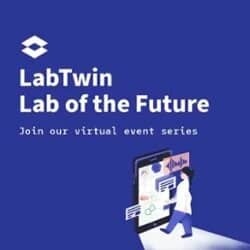Scientists and lab managers are bombarded with new products all claiming to save time and money, be more efficient or provide better results. However, most of the time, life science products are designed and developed in isolation, behind closed doors, and researchers only hear about these products when they are finalized and ready to sell.
The result of this product-centered design approach is that scientists struggle to work in labs filled with disconnected machines that produce data in many different formats. Researchers often have to collect data from each machine and manually input this data into paper lab books or static software such as Electronic Laboratory Notebooks (ELNs). Data management challenges are compounded at the company level, with managers facing decades-worth of fragmented, isolated datasets.
“Humans make the most errors in manual input. If we can make it easier to collect and integrate different types of data, results will be more meaningful.”
Miriam Estrada, Senior Business Analyst, Business & Technology solutions for Life Sciences & Chemicals, Capgemini
The key to creating a highly functioning, truly integrated laboratory is to put scientists at the lead of the product design process. This concept, called “user-centred design”, involves companies working with scientists from the very beginning of product design. Companies then continue to consult with scientists and take on board their feedback throughout product development. With a user-centered design approach, companies can quickly pivot and adapt products to better fit scientists’ needs. Products designed in this way solve a real human need and integrate seamlessly with existing lab infrastructure.
At LabTwin, we think focusing on humans is more important than technology itself. Companies can have the most innovative technology, but if it is not connected with humans, it will never be adopted and it won’t change anything.”
Guru Singh, Head of Growth, LabTwin
LabTwin is founded on user-centered design principles. We visited hundreds of labs to hear from scientists and lab managers before starting work on our voice-activated digital lab assistant. Through working with scientists, we realized that voice could solve the data desert scientists experience at the bench.
Scientists remain at the lead of LabTwin product development. Every update and feature that we add comes from listening to scientists’ feedback about the solutions they want to the problems they face in the lab.
We made machine learning an integral part of our voice-activated digital lab assistant so that LabTwin learns at the individual scientist level. The more a scientist uses our digital assistant, the more personalized and intuitive it becomes.For more information on user-centered design in research labs, download our whitepaper.











